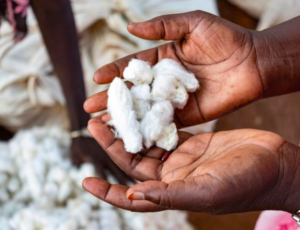In 2019, 150 of the world’s most recognised retailers and brands collectively sourced more than 1.5 million metric tonnes of cotton as “Better Cotton’ – that is enough cotton to make approximately 1.5 billion pairs of jeans. The retailers, who are all members of the Better Cotton Initiative (BCI), hit a new sourcing milestone and sent a clear signal to the market that there is increasing demand for more sustainably grown cotton.
Uptake1 of Better Cotton – cotton produced by licensed BCI Farmers in line with the Better Cotton Principles and Criteria – increased by 40% on the previous year. The volume sourced by BCI’s 150 Retailer and Brand Members in 2019 represents 6% of global cotton production2. By increasing sourcing commitments year-on-year and integrating Better Cotton into their sustainable sourcing strategies, BCI Retailer and Brand Members are driving demand for more sustainable cotton production worldwide.
Long-standing BCI Member Decathlon shared their thoughts on BCI and Better Cotton; ”While physical Better Cotton is not traceable to the end-product, what matters is that the funds channelled through BCI end up contributing to farmer training and expanding the network of cotton farmers who are improving their livelihoods, while protecting and restoring the environment.Decathlon has a target to source 100% more sustainable cotton by 2020 – this is a combination ofBetter Cotton together with organic and recycled cotton. This commitment has generatedahigh level of motivation internally at Decathlon. The BCI Team has also always been supportive of our journey, listeningto our needs and quickly responding to any challengeswe met,” says Nagy Bensid, Director Yarns and Fibres, Decathlon
BCI’s demand-driven funding model means that retailer and brand sourcing of Better Cotton directly translates into increased investment in training for cotton farmers on more sustainable practices. For example, in the 2018-19 cotton season, Retailer and Brand Members, public donors (DFAT) and IDH (the Sustainable Trade Initiative) contributed more than ‚Ǩ11 million to field-level projects, enabling more than 1.3 million cotton farmers in China, India, Pakistan, Turkey, Tajikistan and Mozambique to receive support, capacity building and training.3
BCI Supplier and Manufacturer Members also play a crucial role in increasing uptake as they bridge the gap between Better Cotton supply and demand. In 2019, suppliers and manufacturers sourced more than two million metric tonnes of cotton as Better Cotton, ensuring that there was enough supply available to meet retailers’ needs.
The retailers and brands, cotton traders and spinners who sourced the largest volumes of Better Cotton in 2019 will be revealed in the 2019 Better Cotton Leaderboard, launching at the 2020 Global Cotton Sustainability Conference in June. You can view the 2018 Leaderboard here.


Notes







































